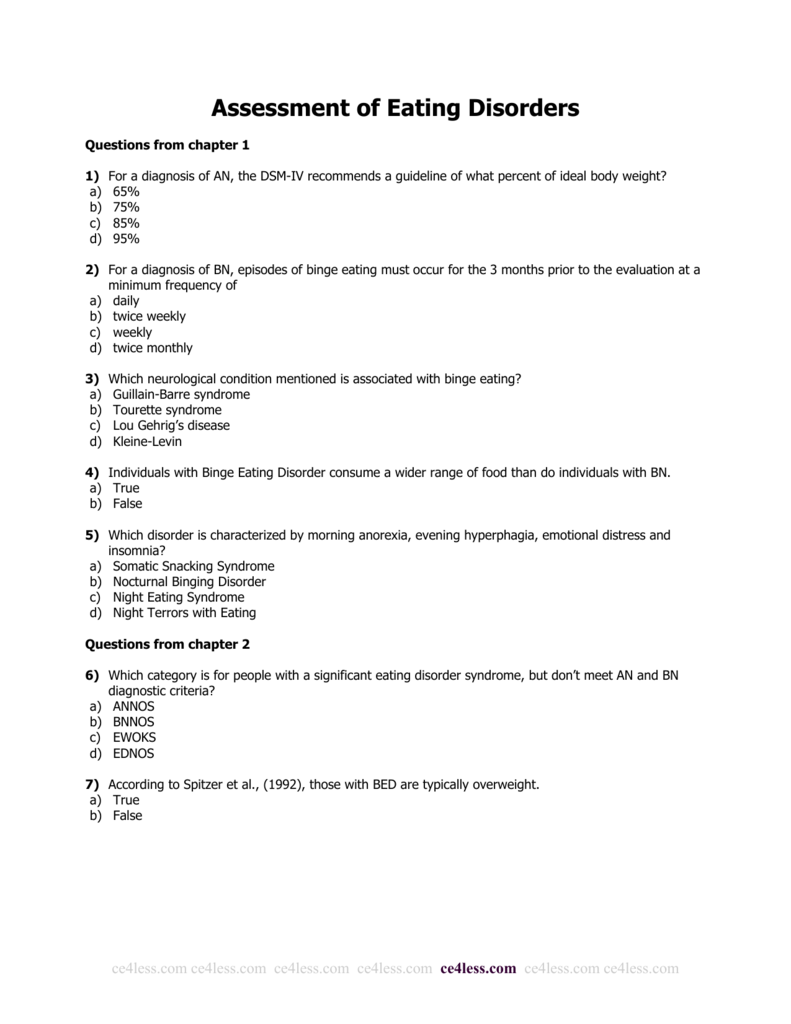

Rudolph MS, in Adolescent Health Screening: an Update in the Age of Big Data, 2019 Eating disorder inventory It’s important to talk about the potential risks and side effects of medications before adding them to your treatment plan for binge eating disorder.Sarah Spinner PsyD, Brittany D. Some medications have shown to help in the treatment of binge eating disorder. By reducing daily stressors and providing an outlet to process negative experiences, this therapy method can reduce the urge to binge eat. This can help people address potential triggers of binge eating episodes.ĭialectical behavioral therapy is helpful in the management of stress, negative emotions, and relationships. By strengthening one's interpersonal abilities, this therapy method aims to improve relationships and reduce stress caused by interactions with others. Interpersonal psychotherapy is centered on patients’ relationships with others.
#BINGE EATING INVENTORY HOW TO#
Additionally, CBT is helpful in learning how to cope with binge-eating triggers, like depression and low self-esteem. In cognitive behavioral therapy, people with binge eating disorder can gain a stronger sense of control over their behaviors and eating habits.

These are all forms of psychotherapy and aim to help patients replace negative thought patterns and behaviors with positive alternatives. Therapy for binge eating disorder may include cognitive behavioral therapy, interpersonal psychotherapy, and dialectical behavior therapy. Therapy and/or medications are the most common treatments for binge eating disorder. An individualized treatment plan is the best way to address a patient’s unique needs. Successful treatment methods binge eating disorder can vary from person to person.
#BINGE EATING INVENTORY FULL#
But, treatment can help you make a full recovery and repair your relationship with food.


Disengaging from loved ones and regular activities.Fear or discomfort eating in front of others.Other signs that are often present in people with binge eating disorder include: Feelings of disgust, guilt, or depression after eating.Eating alone for feelings of shame or embarrassment.Eating high quantities of food without being hungry.Becoming full to the point of discomfort.The following characteristics are common in a binge eating episode: During a binge eating episode, one often feels unable to control what or how much they’re eating. Binge eating episodes occur within a two-hour window and involve consuming more food than the average person would eat in the same time frame. Recurring binge eating episodes are the key factor in a binge eating disorder diagnosis. By seeking help, people with binge eating disorder can regain a feeling of control and lessen feelings of shame associated with eating. This is the case with bulimia, another recognized eating disorder.īinge eating disorder can be extremely damaging to your physical and mental health. Additionally, people with binge eating disorder don’t often compensate for excess calories by purging, exercising excessively, or taking laxatives. While the binge may initially provide the individual a sense of relief, it’s typically followed by feelings of shame, guilt, and a loss of control. It commonly starts during the late teen years or early 20s for women and during midlife for men.Įmotional distress is a common cause of binge eating episodes. While binge eating disorder was only recently officially recognized by the American Psychiatric Association, it’s one of the most prevalent eating disorders today. But, people with binge eating disorder feel unable to control their eating in an unhealthy way. Most people overeat occasionally, often on holidays or special occasions. It involves the consumption of large amounts of food in short periods of time, often even if the individual isn’t hungry. Binge eating disorder is a type of eating disorder.


 0 kommentar(er)
0 kommentar(er)
